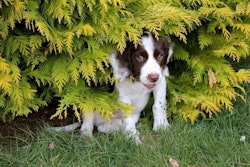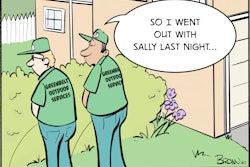 The Greenery Inc. received the American Association of Nurserymen’s highest landscape award that was presented by Nancy Reagan in 1986.
The Greenery Inc. received the American Association of Nurserymen’s highest landscape award that was presented by Nancy Reagan in 1986.Photo: The Greenery Inc.
Island life can sound like paradise, but when it comes to running a landscaping business there, just like plants you have to start from the ground up.
The Greenery Inc. was established on Hilton Head Island, South Carolina, in 1973 by Berry and Ruthie Edwards. The couple fell in love with the location while vacationing and decided to move there.
They purchased Hillside Landscape Nursery and started out as a design/build company with a staff of six and a few trucks. Now 44 years later, The Greenery employs around 600 to 650 people and does predominately maintenance.
“It took us about 10 years to realize that if we’re going to design it and we’re going to install it we ought to take care of it,” said Jerry Ashmore, director of workforce development and safety for The Greenery. “So, our maintenance division was born in the early 80s.”
The company’s business is now about 80 percent maintenance and 20 percent construction and services high-end private golf communities, HOAs and commercial and residential locations.
Employee-driven company
The Greenery doesn’t really have much of a dormant season along the coast so the staff numbers only drop five to 10 percent during the off-season. From the start Berry and Ruthie Edwards focused on growing the business by hiring the most knowledgeable and experienced landscapers in the region and that stays true today.
Despite the large staff, the Hilton Head-based business does not use H-2B to find its workers.
“We do a lot of recruiting and we cast a wide net,” Ashmore said. “We have an employee referral incentive program that works pretty well for us.”
One of the interesting ways The Greenery gets workers to the market it serves is with its ride share system. Early on, Berry Edwards and others realized that there was no one living in the area, aside from vacationers and wealthier individuals, and they had to incentivize people to get them to come work on the island.
 The Greenery employs around 600 to 650 workers.
The Greenery employs around 600 to 650 workers.Photo: The Greenery Inc.
“We would send guys in vans,” said Miles Graves, a branch manager for The Greenery. “We would provide the vans, we’d pay them the fuel to do it so we’ll have a dedicated driver. He’s reimbursed on some level to be responsible for the group. They drive them all home in the afternoon and they pick everybody up and come back in the morning.”
Graves estimates that they currently have seven 16 passenger vans along with another 10 trucks that carry four to five employees each that move in and out of the market on a daily basis. The work van program also helps attract new workers who notice the vans and become curious about the company.
The employee referral incentive program has been helpful for the company and the employee who brings in the new recruit is rewarded financially based on the length of time the new worker stays with the company.
“One we get bodies because everybody knows somebody, but also if you’re going to refer then expect to work with them,” Graves said. “Then you better have good referrals cause you’re going to have to be working with these people so it helps us to get better quality people. The people that refer them feel somewhat responsible so they kind of keep them in check, keep them motivated, keep them focused.”
Labor is still a the number one issue The Greenery faces, despite the programs it has in place and is why it attends recruiting opportunities like the National Collegiate Landscape Competition.
“That’s what we all want,” Graves said. “Somebody who’s just going to get geeked up about doing the job and it helps everybody in your company when you get that new blood in. They pump y’all all up, even guys like us.”
Graves has been with The Greenery for 13 years while Ashmore has worked for the company 17 years. Ashmore credits the culture and the fact that the business is an Employee Stock Ownership Plan (ESOP) company as part of the reason why there is a lot of employee longevity.
“Also, we see that our folks police each other,” Ashmore said. “They don’t waste that. They don’t idle that. They don’t do that because it’s coming out of my retirement. I think that helps us; I think that helps our efficiency. The third, fourth man on the crew, he’s an owner. He’s got a stake in it; he takes pride in it. This is my company. He’s going to take better care of it if it’s his or hers.”
The company became employee-owned when Berry Edwards, CEO at the time, wanted to give something back to his employees after he retired in 2007.
“His exit strategy was to give back to the people who had taken care of him so instead of selling to some large landscape firm he brought in a third party to put a value on The Greenery,” Ashmore said. “He ponied up the first 25 percent. We bought the additional 75 percent from him over time and then we became 100 percent employee-owned.”
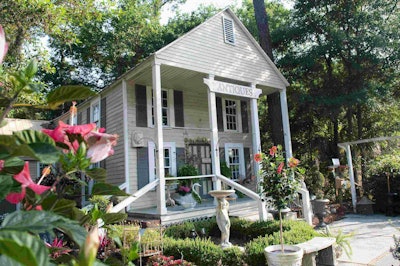 The Greenery’s retail center is housed in a church that was built in 1873.
The Greenery’s retail center is housed in a church that was built in 1873.Photo: The Greenery Inc.
Now Edwards’ son, Lee Edwards, is the company’s CEO. The company has eight branches and has a southeast regional footprint from Mt. Pleasant, South Carolina, to Brunswick, Georgia.
The corporate headquarters is based on Hilton Head Island and was once housed in a historic church building that was barged over to the island when Ruthie Edwards saw it for sale. The Old Bethlehem Church now serves as The Greenery’s retail garden center.
“That was the office and garden center was the laydown yard and the trucks came back in the afternoon and we sold little plants out of it too,” Graves said. “So now we’ve grown and grown and grown and now that little church is our antique store. They sell little antique, eclectic collectables and holiday gifts and décor and then the garden center is all around that as well.”
Safety first
The Greenery follows a three-step approach when it comes to being successful and those are: safety, quality and production, in that order.
“Safety’s number one,” Ashmore said. “That’s paramount. That’s the biggest thing we do and we have a moral responsibility to keep our folks safe. Safety is just the right thing to do.”
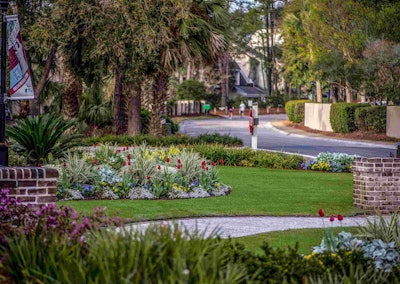 Photo: The Greenery Inc.
Photo: The Greenery Inc.The company has an encompassing safety program that includes morning stretching that cuts down on back strains, tailgate topics about the tasks at hand and GPS monitoring for harsh braking, accelerating or cornering. Each branch has a safety representative, and they all meet once a month. Vendors and vehicular insurance folks often come in to help train the crews as well.
Graves explains that in order for safety to improve it must be supported from the top down and become just part of the company’s culture.
“You have to stop and actually become less efficient,” he said. “You have to be less efficient to be safe. So, looking at those things that are dangerous and less efficient and saying I’m going to sacrifice time to be safe, and ultimately if you’re doing a good job with it and you take every opportunity to improve and educate and change when you see those things that are unsafe, you will develop the culture. The culture is what pushes the whole beast. If you don’t have good culture about safety it will never work. Everyone will fight you tooth and nail.”
Once the culture is in place it becomes easier to integrate new employees into the system because they will not want to stick out.
“Human nature is don’t be different,” Graves said. “Fit in with the crowd. Make safety the culture and then everyone’s safe because it’s the cool thing to do. To get it going you have to have that support and once you get it going you have to always be refining, but it has to become a culture and once it’s that, it’s so much easier because it snowballs and it’s just rolling and you kind of tweak it every now and then but it just keeps going.”
Communication is key
Customer satisfaction is always a crucial part of any business and for The Greenery, it has found that communicating is the most important method to maintaining it.
The company has a dedicated employee who handles its system of client surveys, and depending on what type of work was recently done the client will eventually receive a survey requesting feedback. Recurring maintenance clients receive a survey every quarter.
The positive reviews are shared with the company and for the few negative ones that they receive Graves says it’s important to start to communication to say that you care about their problem.
“I have two email templates that I’ll use for my response, but both of them start out ‘Thank you for taking the time to fill out the survey. We take customer service and landscape quality very seriously,’ and then tell them, let’s meet, let’s talk, I’m going to fix it, what do you want me to do.”
 Photo: The Greenery Inc.
Photo: The Greenery Inc.Generally, the negative reviews turn out to be nothing once someone gets in contact with the customer and they were simply having a bad day.
“It’s unbelievable how much you get in their satisfaction for the next year from that one thing,” Graves said. “They will be so forgiving on anything that they see because you had a positive interaction with them.”
The Greenery strives to initiate communication with clients to assure them that they are on site and monitoring their properties, even if the customer doesn’t happen to see them that week. The company even brings in consultants for manager training to teach them how to interact with clients and what form of communication works best for them.
“Sometimes it’s just asking, but if it’s a talking thing you got to feel them out so we look at the four kinds of communicators and we categorize what type of communicator they are,” Graves said. “So, we go through that training and bring in consultants and it helps.”
While some are take charge individuals who want to hear “Yes, we’ll get that done,” others prefer to have ideas pitched at them and need more guidance. By understanding how to communicate with each client and building relationships helps drive their customer satisfaction.
End goal
The Greenery has both a purpose statement and a mission statement posted at every branch and it captures the goals of the company succinctly.
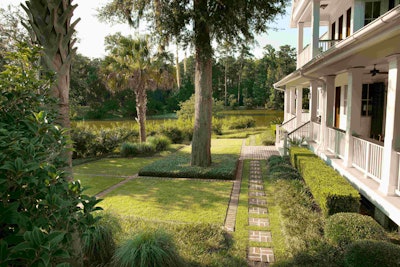 Photo: The Greenery Inc.
Photo: The Greenery Inc.The purpose statement answers the question of what does the business do and why do they do it – to enhance people’s lives through beautiful landscaping. This purpose statement is twofold because it is not only enhancing the lives of the customers by creating beautiful spaces they can relax in, but it also enhances the lives of its employees by supplying them a way to provide for their families.
“If you keep that in mind in everything you do, you’ll definitely do a better job,” Graves said.
The mission statement of the company is to be the best in the markets it serves.
“We don’t want to be the biggest,” Ashmore said. “We don’t care about being the biggest. We just want to be the best in the markets we serve and we believe that.”

